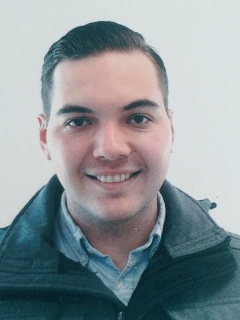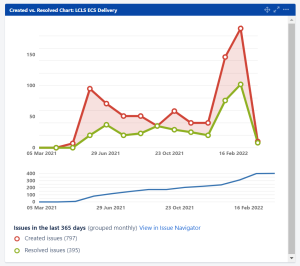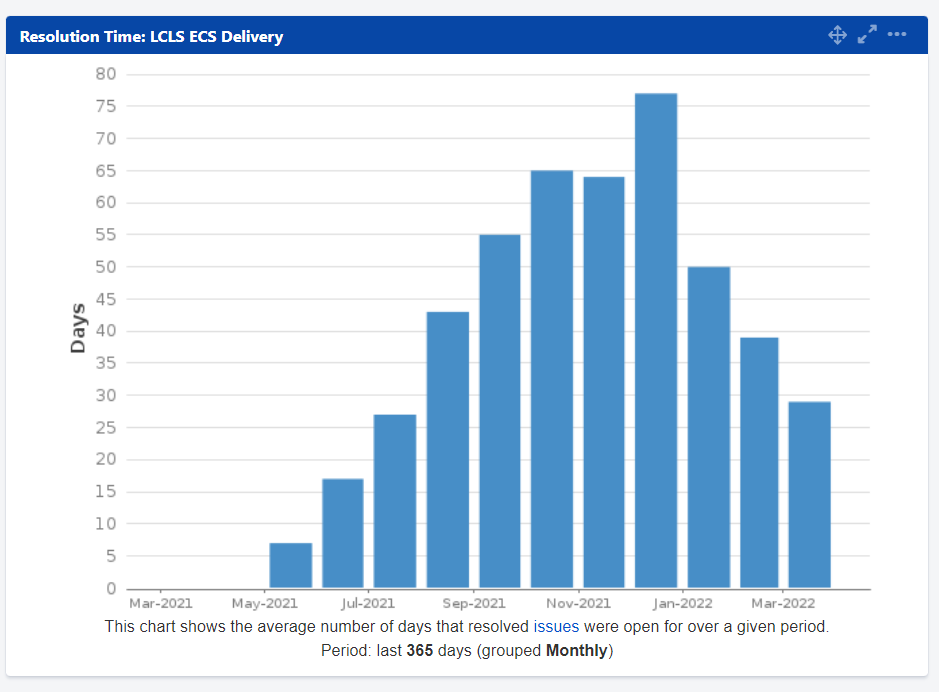Introduction
Future of Cameras
- Discontinue Pulnix camera usage
- Identified as problematic, and should be replaced at the earliest opportunity.
- Deprioritizing CamLink Development
- Halting further development of CamLink including: new feature requests, new camera integrations, bugfixes, and integration of new libraries.
- Still the only way to get a real "hardware" timestamp on a frame at 120Hz.
- Moving towards USB3
- Current camera integration requests are mostly USB 3
- Prioritizing development of solution for proper timestamping but it seems OK for now (OBO issues).
- See SDL list.
Getting Help from ECS, Seminar
We had another control system seminar in January all about ECS scope and how to use our Jira system to request help from the team.
We think it's a highly valuable presentation for new and veteran LCLS employees to understand what ECS can do for them.
Getting Help From ECS Control System Seminar
All the other control system seminars are posted here: Control System Seminar Series
HE Controls
ECS presented XES controls design status for the February Director's review. The review focused on preparation for CD2/3 with focus on plan, design status and resource profile. The team demonstrated that as per December 2020 DOE Status review recommendation that lessons learned have been addressed and being implemented.
The team also showed the plan and ramp up towards CD2/3 now that we have secured the resources needed to execute the project.
The review committee observed in their reports that our designs appear to be sufficient at this point.
Currently, the team is focused on preparing for the upcoming DOE Review in March.
Controls ICD under review
We recently completed a draft of an ICD for experiment controls for HE and it turned out so well we're thinking about making it a general purpose ICD for ECS to any and all projects going forward. ICD stands for Interface Control Document, and in systems engineering it can have a varied definition. Some projects use ICDs as a way to describe the physical and functional aspects of an interface between two subsystems. In HE and MEC-U's case the ICD will be used to describe the project interface between subsystems, clarifying who has what scope, and what information is needed from ECS and the respective other aspects of the projects.
It's a good document to read and understand because it clarifies what ECS will do in the HE and MEC-U project, and also in general.
ATEF Development
We are working on refocusing our ATEF development efforts, with a primary target of passive testing of control system devices.
The "passive" portion of this means that it will be fully-automated and non-intrusive (will not move your motors or otherwise cause a PV to change).
We are looking to create a configuration GUI for easy specification of these checks and a report generation system for all results.
Future development will include: active tests (guided, with humans in the loop) including integration with bluesky, a synoptic for viewing the atef-reported status of all devices, integration with Grafana, views of devices in typhos/hutch-python at a given time in the past, and many other things.
Alarm System Campaign Kickoff
Federica Murgia has kicked off the design and implementation of the alarm system at LCLS.
The NewALarMSystem, developed by the TID CDS Advanced Controls group, is designed for the availability, integrability, and extensibility of the alarm systems at SLAC.
The installation of the NALMS will start from the FEE in the coming weeks. Future updates will be posted as comments on the Jira ticket.
The scope of the campaign is working to capture and implement alarm thresholds, and hierarchical summaries of alarm states throughout the control systems, using NALMS.
What does this mean? For example, if there is an error with an encoder readback, and it will prevent motion of a diagnostic element, that error will be flagged in EPICS as an alarm, and that alarm could be propagated to a very high-level summary display for operators to understand and trace. So at any given time an operator could see for a given area (like the FEE), if there are ANY issues with mechatronics, and then which component has an issue, and then which sub-component has an issue.
This will not only make our operations more robust as issues can be discovered earlier, but also pave the way for us to obtain real metrics on device reliability and availability.
Experiment State Tracker
Zachary L Lentz Michael Browne
Grafana Public (login-less) Dashboards
If you have been following the LCLS-II superconducting linac cryomodule cooldown status, you are unknowingly already been using our new non-interactive public-facing Grafana dashboards.
The current list of available dashboards can be found here:
→ https://pswww.slac.stanford.edu/swdoc/ecs_dashboards/ ←
These public-facing dashboards are non-interactive rendered images of the full dashboard. They are accessible to anyone on the Internet, with no SLAC login or affiliation required.
If you have additional dashboards you would like to see listed, please let us know.
ECS Supported Device List
QRIX
We have been busy with testing, checkouts and install of QRIX endstation Controls. The schedule has been pulled forward with tasks that needs to be completed/ready in preparation for Toyama's visit to install and checkout the spectrometer arm.
All the in-vacuum stages have been functionally tested prior to installation.
Installation and termination of 80% of vacuum control components (DRLs and cables) are complete and 50% of motion controls components.
The qRIX Motion and Vacuum PLC are up and running with their IOCs and vacuum screen live and added to RIX LUCID screen.
DC System Updates
New team members!
Robert Tang-Kong has joined the ECS Platforms Development team, and will primarily work on the hutch python environments. Prior to joining ECS, Robert got his PhD in Materials Science at Stanford and worked at SSRL as part of their data acquisition pilot project. In his downtime, Robert enjoys reliving his glory days in competitive yo-yoing and playing video games. | |
| Peregrine McGehee has joined the ECS Delivery group as the new MEC PoC. His background includes teaching physics and astronomy at Ventura College, working as a staff astronomer at NASA'S Infrared Processing and Analysis Center, and prior to that as a controls engineer at the Los Alamos Neutron Science Center. A few other things that take his time include being a co-chair of one of the Rubin Observatory science collaborations and continuing the study of Balinese gamelan. | |
Mike Estrada Mike Estrada has joined ECS as the new PoC for the XBD group. His hobbies include weightlifting, seeing live music, cooking, trying new restaurants, and travelling. He likes to fill his spare hours playing video games, visiting with family, and going wine tasting. |
Jira
We're getting better at Jira. Check it out:
Our unresolved tickets grew by about 50% from December to the end of February. We're keeping pace, and perhaps with our new resolution workflows we'll start to cut down on the complete backlog.
One thing to note is we'll soon cross a point where it is a good idea to check Jira for prior tickets before submitting a new one. Much like Stack Overflow, Jira tickets are a kind of knowledgebase.
We resolved 199 tickets in Jan and Feb.






